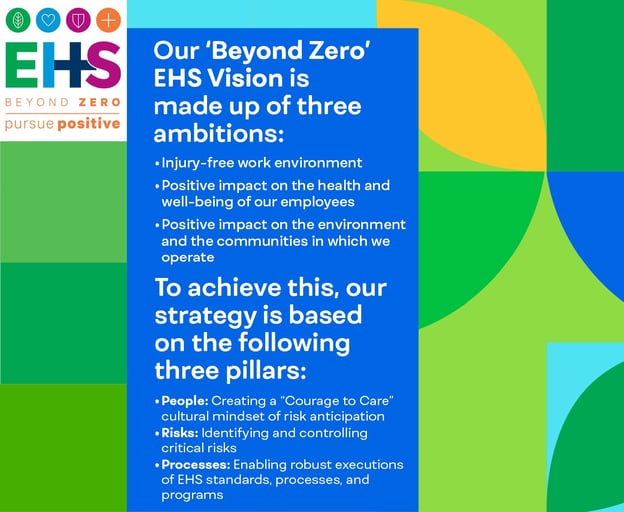It’s a no-brainer that a safe work environment is essential for any company to thrive. After all, no one wants to work in an environment with a risk of personal injury. No one wants to be in a company that can put other people at risk.
According to a Health and Safety Report, an average of fifteen people die daily in workplace accidents. That’s a sobering thought and one that should motivate companies to start improving safety culture. Having a strong safety culture at work is a great way to reduce the risk of employees' accidents and of them making unsafe decisions.
A strong Safety Culture can also help your organization save money on insurance and improve employee productivity and customer satisfaction.
Enhancing your company’s safety culture begins with recognizing where you stand and taking the necessary steps to make positive changes over time. In this blog post, we’ll show you how to improve safety culture in your workplace.
-
Formulate and Communicate Safety Policies
The first rule of thumb to achieving a strong safety culture is to sensitize your employees on the importance of safety in the workplace. To achieve this, you need to formulate safety policies first, of course.
Major companies take pride in prioritizing safety for their employees and contractors. These companies have set the pace by instituting several safety precautions to prevent and minimize employee harm.
For instance, Pepsi Cola has a Global Environment, Health and Safety (EHS) framework that aims to achieve its Beyond Zero vision of no harm to its employees and the environment. Total Energies, meanwhile, conducts operations according to its Safety Health Environment Quality Charter to protect its employees.

You should aim to prevent damage to company properties, too. Company properties don’t just refer to buildings and business property. It also refers to your computer systems. In this digital age, cyber-attacks are also rising. According to a ThoughtLab study, in 2021, material breaches rose to 20.5% from the previous year.
Minimize your risk by ensuring that all employees are mindful of cyber threats so they can avoid them. For instance, include in your cyber security policy that your employees need to select strong passwords. Specify that they shouldn’t share their passwords with others or leave them in conspicuous places.
Of course, your employees can only do so much to protect the company’s computer systems. You should observe cyber safety procedures from the start.
For instance, before picking a web host, check shared web hosting review sites first. This is so you can choose the platform that provides the best security protocols for your organization’s site. For example, look for one that applies specific security patches to the server.
Communicate these policies to your employees. Keep them up-to-date on changes to your safety policies as well.
2. Include Influential Team Leaders in Safety Committee
It’s also vital that you know how to improve the safety culture by involving high-level leaders. Include them in your safety committee, which is in charge of all safety-related issues in the workplace. So, you’d need to train your members on Occupational Safety Health Administration, and cyber security, among others. If you can get your high-level leaders on board, you can get your rank-and-file employees on board, too.
Who are these high-level leaders? The CEO, the Head of HR, and the COO are just a few. You can also involve department managers, depending on your business's nature. Microsoft, for instance, includes the managers of their data centers, retail operations, and office locations in their Health and Safety Committee.
You can also create a Chief Information Security Officer (CISO) who can lead the safety committee. The same ThoughtLab study found that CISOs’ roles have expanded. They’re no longer just responsible for data security (49%). Many also assume customer and insider fraud (44%), supply chain management (34%), enterprise and geopolitical risk management (30%), and digital transformation and business strategy (29%) roles.
Use tools such as Ving! for all your employee safety trainings.

Ving! allows you to create your own course and select dates and times for course delivery. With the platform, employees also have access to 1000 safety courses.
3. Establish a Positive Reporting Culture
Upholding a solid safety culture means more than just posting signs reminding people to be safe. A strong culture is reliant on trust, respect, and open communication.
It would be best to create a culture where workers feel comfortable sending emails or calling you on an IP Phone system to report safety issues. What is an IP phone system? It’s a business phone system used to communicate through internal and external calls over the internet. Whichever communication method you use, assure employees that they will not face any negative consequences for reporting safety-related issues.
Also, provide employees with the resources they need to report issues in the first place. By resources, I don’t just mean the communication tools I mentioned above. I also refer to human resources such as managers and IT personnel who can help them deal with such issues. Rank-and-file employees should have access to their contact information to reach out to make any safety reports immediately.
Finally, when an employee reports an unsafe condition, acting immediately is essential. Do not delay—responding quickly shows the company prioritizes safety and security.
In Closing
A safety culture means everyone in the organization takes safety seriously—from the top down. Implementing a strong safety culture at the workplace can help you achieve better safety performance, save money on insurance, and increase employee engagement.
We have outlined three fundamental tips for improving the safety culture in your workplace. Formulate and communicate safety policies to your employees. Also, include influential team leaders in the safety committee. Finally, create a positive reporting culture.
Follow these tips, and you’ll enhance the safety culture in your organization in no time. You’ll reap the benefits.
Author Bio:
Matt Diggity is a search engine optimization expert and the founder and CEO of Diggity Marketing, The Search Initiative, Authority Builders, and LeadSpring LLC. He is also the host of the Chiang Mai SEO Conference.






Leave a Comment